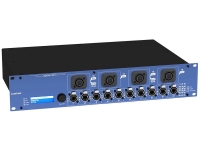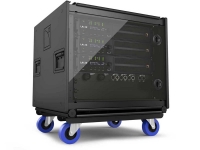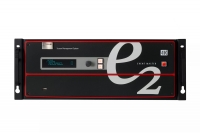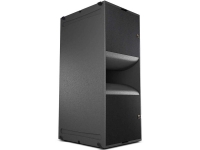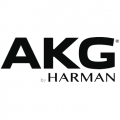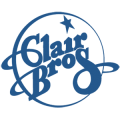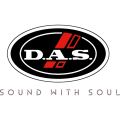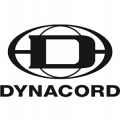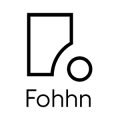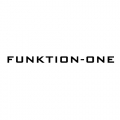ABOUT THE PRODUCT
ABOUT THE MANUFACTURER
GLOSSARY
MISI
The MISI (MIddle-SIzed line array) audio system contains all the know-how acquired by the X-Treme SBU (Strategic Business Unit).
The entire organization has always aimed to build the best loudspeaker systems available in professional audio and special efforts have been made to design this sound reinforcement system. This is recognizable in any of its characteristics: the high sustainable power (despite the small size of the various units), the remarkable sound pressure generated (the sensitivity of a XTMISI element is close to that of the 'big' XTLSA line array) and finally a very fast response speed, which is unique in the current state-of-the-art for the professional audio market.
While always looking towards technological innovation, X-Treme engineers have focused mainly on a design-related requirement: an extraordinary compactness, along with an inevitable fascination of the vertical line array system.
Such a technical-emotional mix has generated a sound system that, in all respects, has gone beyond our most ambitious expectations: a 900 W RMS line array module and a 2400 W RMS subwoofer, both only 82 cm wide! From a technical point of view, this is the result of a perfect interaction between components and cabinets, from small-sized furniture to carefully distributed masses and volumes. From an emotional perspective, it is a successful combination of power and high definition.
The XTMISI model, designed in a compact size, is a wide band system made up of a 10'' woofer tuned according to a balanced symmetric anti-distortion configuration (which reduces distortions to a minimum, shows a drastic 'natural' cut of the frequency response just below 200 Hz and allows the recovery of no less than 3 liters of volume), a 10 mid-range in a closed enclosure (designed for avoiding any direct reflection on the loudspeaker and equipped with amazing dynamics, in spite of its small dimensions) and a new concept aluminium waveguide horn (EIWD - proprietary technology) containing two 1' tweeters.
This line array module can be used without a subwoofer in many of its applications, but, if an extension is required at ultra-low frequencies, the XTMISI unit can be integrated with a floor-aligned or suspended XTMISIS, which consists of a high performance pass band subwoofer, equipped with two high power and long throw 18'' loudspeakers within a width of just 82 cm! What is more, the XTMISIS has been designed to minimize internal symmetries with a 15 mm thick reinforcement cage in the Canadian birch plywood cabinet: as a result, it perfectly complements the XTMISI module, as it generates a marked depth and a widespread roundness in the reproduction of the subsonic frequency spectrum.
MISIS
1. HDSCTM (High Duty Speaker Cover)
All the cabinets of the X-Treme loudspeaker systems undergo a finish process aimed at creating a High Duty Speaker Cover (HDSC). The working phases are as follows:
- carefully sanding the 15-mm thick Canadian birch cabinet equipped with suitable reinforcement cages
- varnishing with a VFI-2513 structural plastic made up of two components (100% solid) for a hot coating (70° C) in hybrid expanded polyurethane. This varnishing complies with the stringent ASTM (American Society for Testing Materials) standards which guarantee excellent hardness, low porosity and high chemical resistance to weather conditions
- applying five layers of resin and fiber glass glaze
- finishing with a matt black, waterproof and scratch-resistant gel-coat.
This process, along with internal characteristics such as reinforcements and the use of slot-in elements, allows the production of a totally waterproof cabinet which is also 'elastic', i.e. resistant to vibrations or similar mechanical stresses.
2. RODAPTM (RObust Design And Prototyping): from 'AS IS` to TO BE`.
The Design Division, in accordance with the methods and materials suggested by the R&D Division, defines the first draft of the 'project specifications' which are the basic design requirements (system design). These project specifications must be approved by General Management before proceeding with the following phases of the project.
Robust Design And Prototyping phases
- Design planning The whole activity is planned through a PERT diagram, which defines the essential design phases and the strategic tasks assigned to each stage.
- Design results Then the actual design of the new product is carried out in detail (from the specifications to the design revision statement). The main design results are as follows: calculations regarding size, rough drawings (produced by using CAD hardware and software tools), part drawings and part coding in an experimental design statement.
- Design checks
- Prototype development The first real operating design phase consists of creating several prototypes of the product being developed. The New Product Division often relies on the support of valued collaborators from the Technical Dept. and/or the Production Dept. upon request.
- Design rechecks
- Pre-series experimental checks
- Project validation.
3. ESAH (Easy Suspending And Handling) systems
The X-Treme suspending systems have successfully passed the tensile, compressive, shear and combined bending stress resistance tests. Additionally, they have been certified as compliant with the CNR UNI 10011 standard. These systems are made up of innovative design modular elements, which can be linked differently in order to suspend or stack the loudspeaker systems in a wide range of configurations. In particular, the handles of the vertical line array flying system have a new shape, which has improved their ergonomic design and handling. A new design of the martensitic steel pins (XT-PIN) has been developed to achieve a more resistant and stable profile, and consequently an easier and faster installation. The X-One line offers two different suspension options for the loudspeaker systems, while, in the upper and lower part of the cabinets, the new Deflector Line has been fitted with practical flying tracks that allow for a quick creation of suspended clusters, thanks to the special ring hook (XT-FTH).
The structure design of every X-Treme flying system units is functional and handy. It is the result of a keen design which enables to create flying systems through a few easy and quick operations, respecting all the rules of safety for both the professional riggers and the audience of musical events.
4. X-MAXOTM (X-treme MAximum X-Over)
X-MAXO technology has allowed the X-Treme designers to make progress in the production of filters (crossovers) for both active and passive sound systems. In fact, the X-Treme filters feature a number of unique characteristics in this sector: a. they permit configuration changes of the loudspeaker system (from 2-way to 3-way or from full-range to bi-amp) by carrying out a simple operation on the high current handling terminals (jumper),
b. they include an induction compensating network for mid to low ranges, and an equalization network for the tweeters,
c. they also include an active protection device called HPCCR (High Positive Current Coefficient Resistor), which reduces the drastic clipping of the signal peaks due to an impedance fit for the loudspeaker's nominal input. The listening effect caused by this protection device is minimized by the Tungsten circuit delay. Moreover, the relevant mass warms up and cools down during transit in the RMS current,
d. they are made up of 'robust' components such as air coils, high insulation capacitors and armoured resistors with aluminium heat sinks,
e. they comply with the recently introduced ROHS regulations.
All this ensures highly efficient and reliable devices over time, in which phase rotation is minimized, with a perfect response to transients as a result.
5. EIWDTM (Electro-acoustic Isophase Wave Duct)
X-Treme engineers and designers have developed a new electro-acoustic transducer for mid-high frequencies made of an aluminium alloy treated with DSA (Diamond blade cutting, Sanding and Anodizing) surface processing technology. This device is called EIWDTM (Electro-acoustic Isophase Wave Duct) and, together with its relevant drivers, ensures a very accurate control of the sound dispersion characteristics along different emission angles. Since the purpose of a line array system is to reduce sound emission in undesired directions and direct it towards the desired audience 'sections', every single transducer has to direct the signals towards its own output 'mouth' with perfectly controlled amplitudes and phases. After an accurate mapping of the sound waves near the output section has been carried out, the same algorithm has been used by X-Treme technicians to draw the three-dimensional development of the waveguide horn. By using the EIWDTM transducer, the final result is a far clearer sound reproduction, coherence and uniformity in the sound energy density distribution.
6. AWSHTM (Acoustic Wave Shaped Horn)
The AWSH aluminium horn has been designed and built using CAE (Computer Aided Engineering) tools for a complete phase alignment of the acoustic wave guide with respect to the woofer; this occurs owing to the original geometric configuration of the nozzle and the ingenious cog that protrudes from the edge of the attachment, ensuring the physical and acoustic alignment of the unit to the front panel where the loudspeaker is located.
Professional used lighting equipment.| Professional second hand lighting equipment.| Professional pre owned lighting equipment.
Professional used audio equipment.| Professional second hand audio equipment.| Professional pre owned audio equipment.
Second hand audio gear. | Second hand lighting.
Pro audio equipment, second hand amplifiers, DJ, second hand sound systems, second hand Microphones, second hand Media Players.
Outdoor & Indoor LED screens for sale, LED mobile truck.
Light trussing, Gebrauchte Veranstaltungstechnik, used stage equipment Stage & Theatre lighting products.
Used X-TREME Audio
X-Treme was founded in 2001 and is a brand of products created by the Strategic Business Unit of the Sound Corporation group, whose objective is to produce “concert, touring and portable sound systems. In other words, professional audio systems dedicated to concerts, live open-air events or any other installation in a closed environment where live music is played.
This group’s top management directly controls well-known brands such as Peecker sound (a leader in the “fixed installations and club sound” sector for over 30 years, with more than two thousand sound reinforcement installations and an international distribution network) and XTE (which deals mainly with "commercial sound.
Maintaining distinct independence in not only management and personnel, but also the strategic aims of the business unit, the X-Treme division, made up of an authentic enterprise with various working activities (from R&D to Production, Quality Control, etc…) can make use of both the tangible resources (i.e. joinery, the electronic department and the electro acoustic department) and the intangible resources (i.e. the know how of the engineers and technicians from the afore-mentioned companies, who are the current members of staff) of a group which has been operating successfully in the competitive professional audio sector since 1968.
Professional used lighting equipment.| Professional second hand lighting equipment.| Professional pre owned lighting equipment.
Professional used audio equipment.| Professional second hand audio equipment.| Professional pre owned audio equipment.
Second hand audio gear. | Second hand lighting.
Pro audio equipment, second hand amplifiers, DJ, second hand sound systems, second hand Microphones, second hand Media Players.
Outdoor & Indoor LED screens for sale, LED mobile truck.
Light trussing, Gebrauchte Veranstaltungstechnik, used stage equipment Stage & Theatre lighting products.
Active: Powered. An active crossover is electrically powered and divides the line-level signal prior to amplification. An active speaker includes an active crossover and built-in amplifier.
Actuality: Audio from an announcer speaking.
Amplifier: A component that increases the gain or level of an audio signal.
Balanced Input: A connection with three conductors: two identical signal conductors that are 180 degrees out of phase with each other, and one ground. This type of connection is very resistant to line noise.
Bandpass: A two-part filter that cuts both higher and lower frequencies around a center band. A bandpass enclosure cuts high frequencies by acoustic cancellation and low frequencies by natural physical limitations on bass response.
Bandwidth: In audio, the range of frequencies a device operates within. In video, the range of frequencies passed from the input to the output. Bandwidth can also refer to the transmission capacity of an electronic communications device or system the speed of data transfer,is very important when planning a meeting for the attendees to stay connected.
Bass: Low frequencies those below approximately 200 Hz.
Bi-Wiring: A method of connecting an amplifier or receiver to a speaker in which separate wires are run between the amp and the woofer and the amp and the tweeter.
Boost: To increase, make louder or brighter opposite of attenuate.
Bridging: Combining two channels of an amplifier to make one channel that more powerful. One channel amplifies the positive portion of an audio signal and the other channel amplifies the negative portion, which are then combined at the output.
CD: Compact Disc. Ubiquitous digital audio format. Uses 16-bit/44.1-kHz sampling rate PCM digital signal to encode roughly 74 or 80 minutes of two- channel, full-range audio onto a 5-inch disc.
CD-R: Recordable Compact Disc.
CD-RW: Rewritable Compact Disc.
Channel: In components and systems, a channel is a separate signal path. A four-channel amplifier has at least four separate inputs and four separate outputs.
Coloration: Any change in the character of sound (such as an overemphasis on certain tones) that reduces naturalness.
Crossover: A component that divides an audio signal into two or more ranges by frequency, sending, for example, low frequencies to one output and high frequencies to another. An active crossover is powered and divides the line-level audio signal prior to amplification. A passive crossover uses no external power supply and may be used either at line level or, more commonly, at speaker level to divide the signal after amplification and send the low frequencies to the woofer and the high frequencies to the tweeter.
Crossover Frequency: The frequency at which an audio signal is divided. 80 Hz is a typical subwoofer crossover point and is the recommended crossover point in theatrical and home THX systems. Frequencies below 80 Hz are sent to the subwoofer signals above 80 Hz are sent to the main speakers.
Cut: To reduce, lower opposite of boost.
Decibel (dB): A logarithmic measurement unit that describes a sound`s relative loudness, though it can also be used to describe the relative difference between two power levels. A decibel is one tenth of a Bel. In sound, decibels generally measure a scale from 0 (the threshold of hearing) to 120-140 dB (the threshold of pain). A 3dB difference equates to a doubling of power. A 10dB difference is required to double the subjective volume. A 1dB difference over a broad frequency range is noticeable to most people, while a 0.2dB difference can affect the subjective impression of a sound.
Delay: The time difference between a sonic event and its perception at the listening position (sound traveling through space is delayed according to the distance it travels). People perceive spaciousness by the delay between the arrival of direct and reflected sound (larger spaces cause longer delays.
Diaphragm: The part of a dynamic loudspeaker attached to the voice coil that produces sound. It usually has the shape of a cone or dome.
Diffusion: In audio, the scattering of sound waves, reducing the sense of localization. In video, the scattering of light waves, reducing hot spotting, as in a diffusion screen.
Digital Audio Server: Essentially a hard drive, a digital audio server stores compressed audio files (like MP3 or WMA). Most include the processing to make the files, and all have the ability to play them back.
Direct-Stream Digital: A format for encoding high-resolution audio signals. It uses a 1-bit encoder with a sampling rate of 2,822,400 samples per second (verses 44,100 for CD). Used to encode six high-resolution channels on SACD.
Dispersion: The spread of sound over a wide area.
Distortion: Any undesired change in an audio signal between input and the output.
DNR: Dynamic Noise Reduction. A signal-processing circuit that attempts to reduce the level of high-frequency noise. Unlike Dolby NR, DNR doesn't require preprocessing during recording.
Dolby B: A noise-reduction system that increases the level of high frequencies during recording and decreases them during playback.
Dolby C: An improvement on Dolby B that provides about twice as much noise reduction.
Dolby Digital: An encoding system that digitally compresses up to 5.1 discrete channels of audio (left front, center, right front, left surround, right surround, and LFE) into a single bitstream, which can be recorded onto a DVD, HDTV broadcast, or other form of digital media. When RF-modulated, it was included on some laser discs, which requires an RF-demodulator before the signal can be decoded. Five channels are full-range the .1 channel is a band-limited LFE track. A Dolby Digital processor (found in most new receivers, preamps, and some DVD players) can decode this signal back into the 5.1 separate channels. Most films since 1992`s Batman Returns have been recorded in a 5.1 digital format, though a number of films before that had 6-channel analog tracks that have been remastered into 5.1.
Dolby EX: An enhancement to Dolby Digital that adds a surround back channel to 5.1 soundtracks. The sixth channel is matrixed from the left and right surround channels. Often referred to as 6.1. Sometimes referred to as 7.1 if the system uses two surround back speakers, even though both speakers reproduce the same signal. Software is backwards-compatible with 5.1 systems, but requires an EX or 6.1 processor to obtain additional benefit.
Dolby Pro Logic: An enhancement of the Dolby Surround decoding process. Pro Logic decoders derive left, center, right, and a mono surround channel from two-channel Dolby Surround encoded material via matrix techniques.
Dolby Pro Logic II: An enhanced version of Pro Logic. Adds improved decoding for two-channel, non-encoded soundtracks and music.
Driver: A speaker without an enclosure also refers to the active element of a speaker system that creates compressions and rarefactions in the air.
DSP: Digital Signal Processing. Manipulating an audio signal digitally to create various possible effects at the output. Often refers to artificially generated surround effects derived from and applied to two-channel sources.
DTS: Digital Theater Systems. A digital sound recording format, originally developed for theatrical film soundtracks, starting with Jurassic Park. Records 5.1 discrete channels of audio onto a handful of laser discs, CDs, and DVDs. Requires a player with DTS output connected to a DTS processor.
DTS ES: An enhanced version of the 5.1 DTS system. Like Dolby's Surround EX, a sixth channel is added. In some cases (DTS ES Discrete), the sixth channel is discrete. Software is backwards-compatible with 5.1 systems, but requires an ES or 6.1 processor to obtain additional benefit. Neo: 6 is a subset of DTS ES that creates 6.1 from material with fewer original channels.
Dynamic Range: The difference between the lowest and the highest levels in audio, it&'s often expressed in decibels. In video, it's listed as the contrast ratio.
Professional used lighting equipment.| Professional second hand lighting equipment.| Professional pre owned lighting equipment.
Professional used audio equipment.| Professional second hand audio equipment.| Professional pre owned audio equipment.
Second hand audio gear. | Second hand lighting.
Pro audio equipment, second hand amplifiers, DJ, second hand sound systems, second hand Microphones, second hand Media Players.
Outdoor & Indoor LED screens for sale, LED mobile truck.
Light trussing, Gebrauchte Veranstaltungstechnik, used stage equipment Stage & Theatre lighting products.

